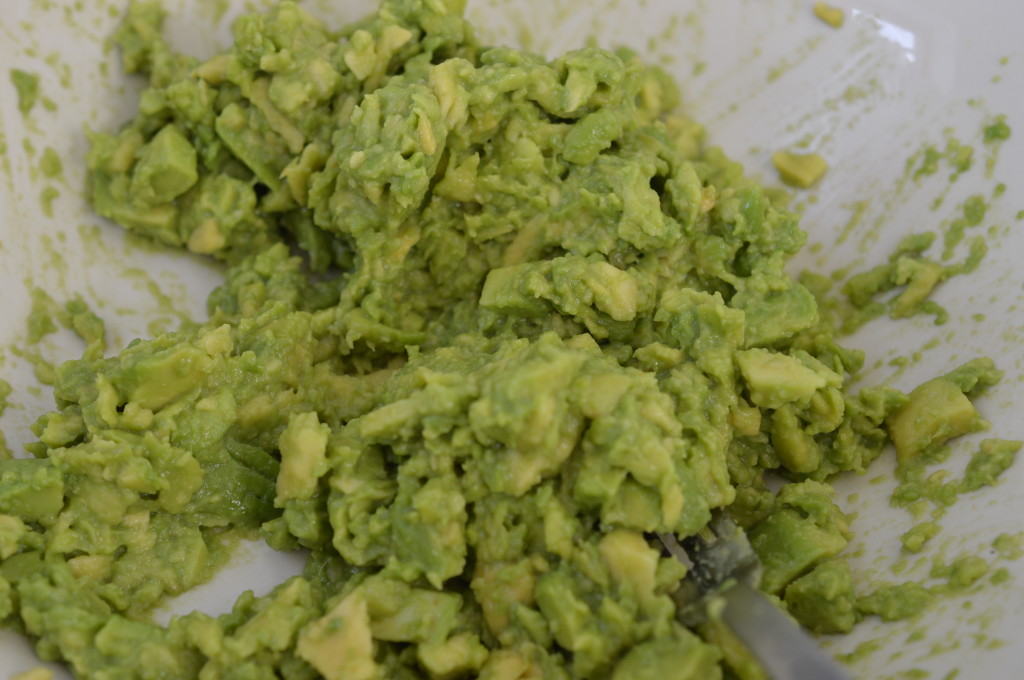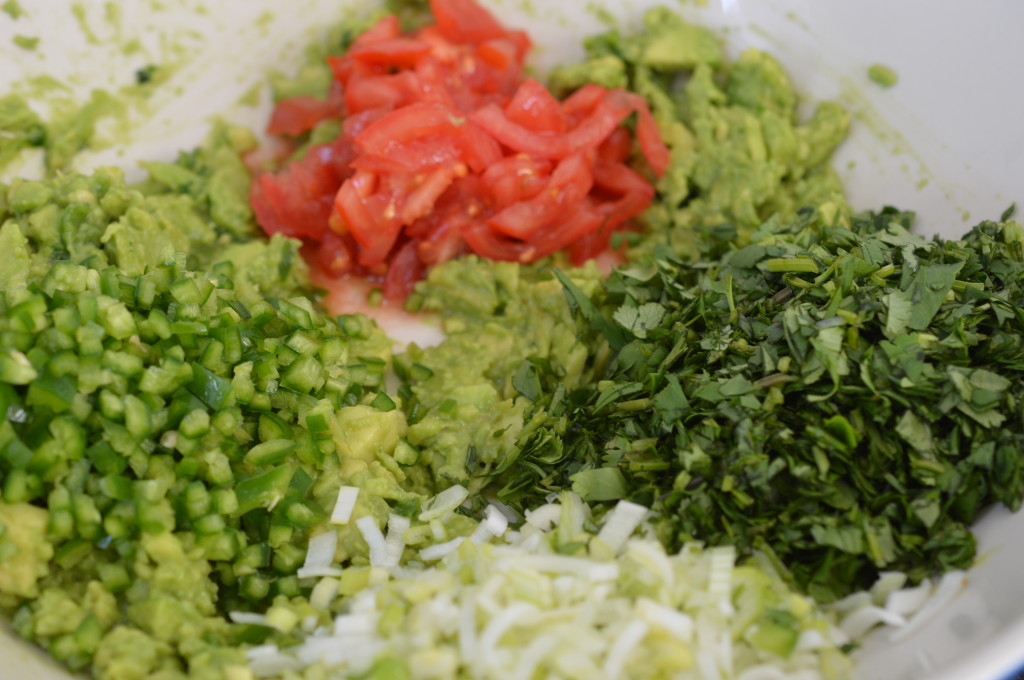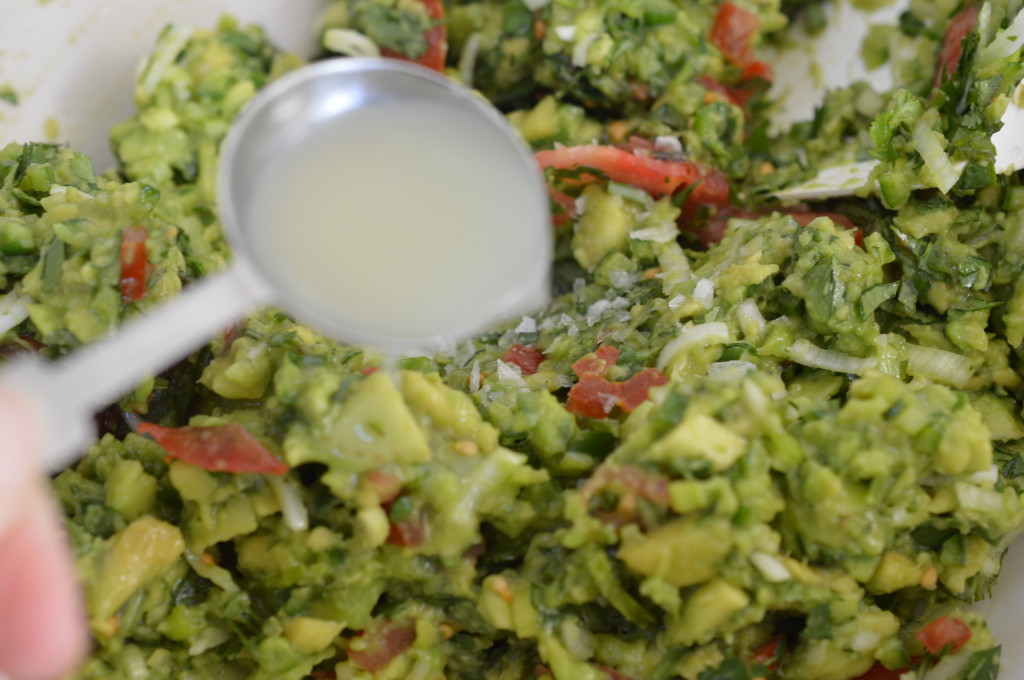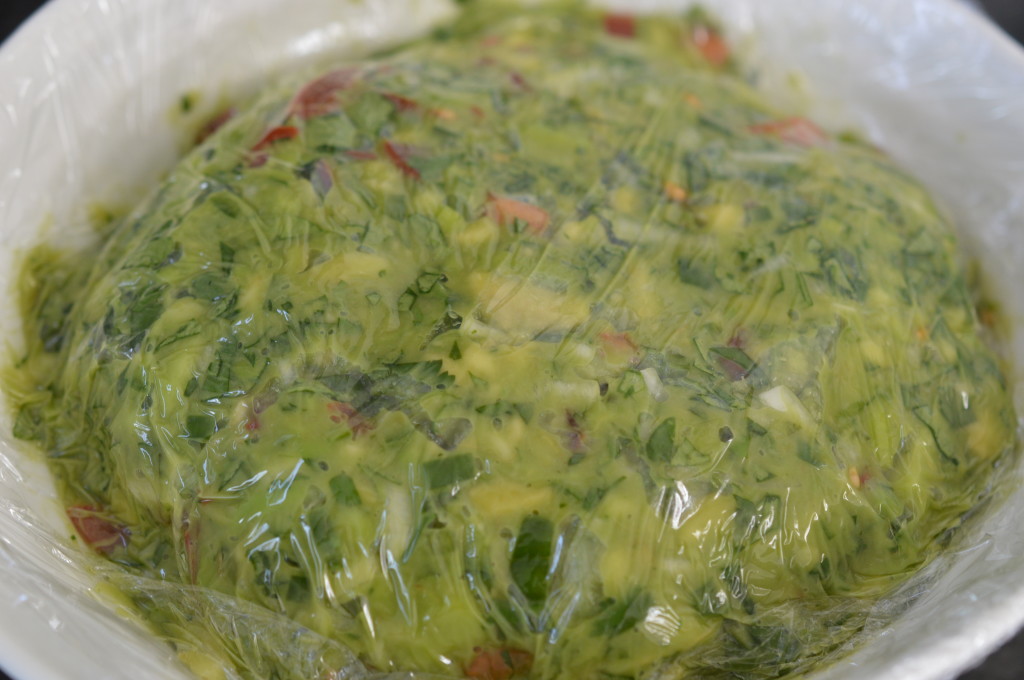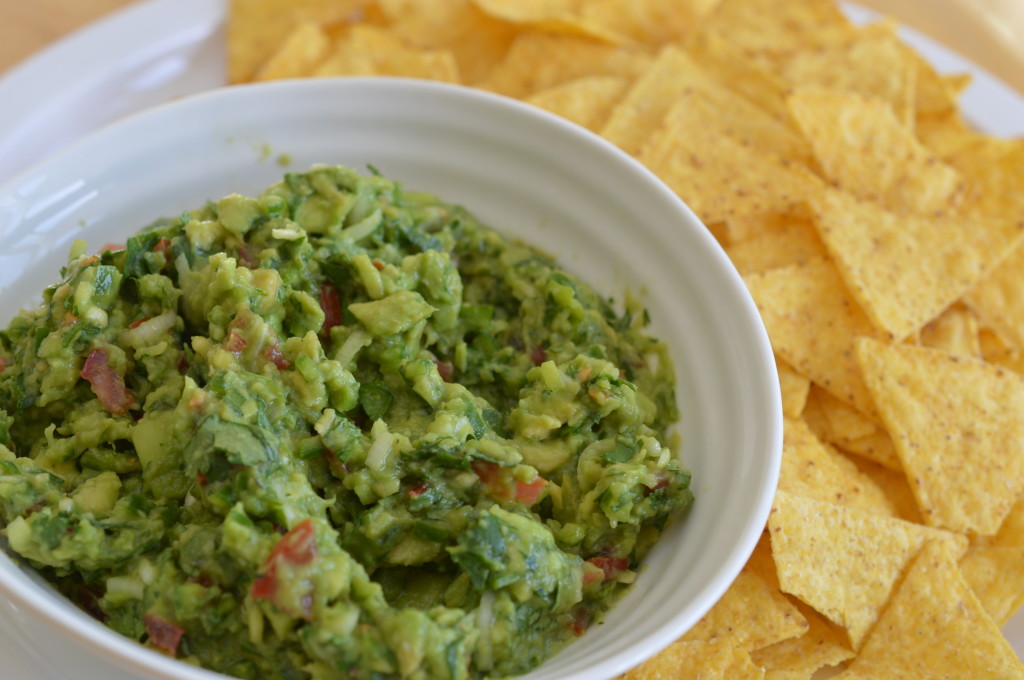Guacamole
The great thing about Guacamole is there is no one recipe for it, which means you can’t be wrong. Aztecs were eating this in the sixteenth century and it seems like the only thing you absolutely have to have is avocado and salt.
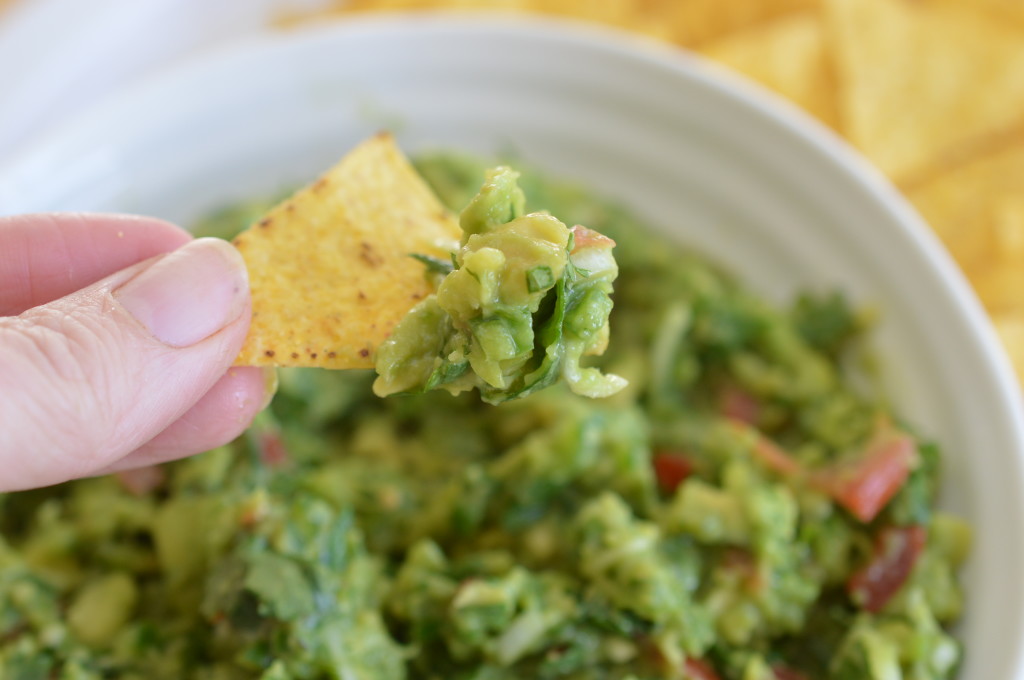 I like mine ‘chunky’, which is definitely a reaction against the commercially produced gloopy stuff. Given a choice, I also prefer mine on top of a bowl of chilli con carne … but here I’m serving it up as a snack. I’ve no idea what big sporting something is on TV at the moment, but my boys are watching it. I really wish I liked sport. I see other people enjoying themselves, but I just don’t get it. I grew up with a mum who loved watching it. Any televised athletics meet and all of Wimbledon meant we didn’t get fed as my mum had to sit inches from the screen exhibiting a noisy enthusiasm which mystified me. But, and this is a big but, I really don’t mind other people doing their thing. I simply hit the kitchen, shut the door on it all, and provide snacks. I’m a committed ‘feeder’.
I like mine ‘chunky’, which is definitely a reaction against the commercially produced gloopy stuff. Given a choice, I also prefer mine on top of a bowl of chilli con carne … but here I’m serving it up as a snack. I’ve no idea what big sporting something is on TV at the moment, but my boys are watching it. I really wish I liked sport. I see other people enjoying themselves, but I just don’t get it. I grew up with a mum who loved watching it. Any televised athletics meet and all of Wimbledon meant we didn’t get fed as my mum had to sit inches from the screen exhibiting a noisy enthusiasm which mystified me. But, and this is a big but, I really don’t mind other people doing their thing. I simply hit the kitchen, shut the door on it all, and provide snacks. I’m a committed ‘feeder’.
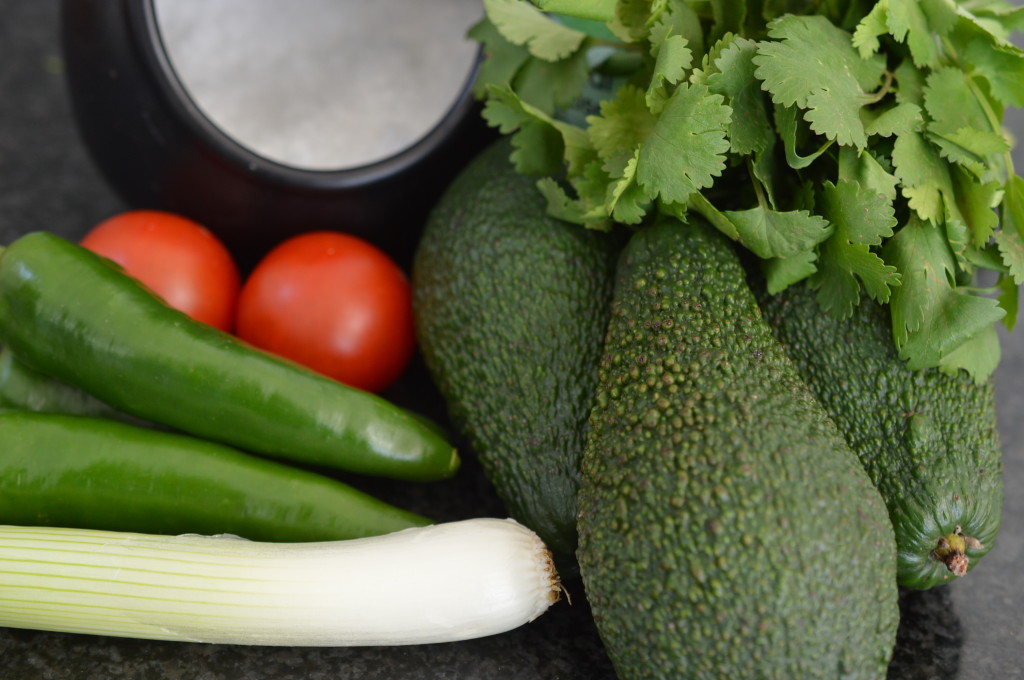 The only knack to making great guacamole is getting a ripe avocado. They’re like pears in that they don’t ripen on the tree. You harvest them unripe and have to wait. A brown bag and a banana (apparently there is a reason for that but I’d have to google to tell you and you might as well do that yourself) will speed the process up if you are in a hurry. Otherwise, buy your avocado and store at room temperature. Colour can be misleading. It’s the squeeze. Probably the best way to learn is to buy unripe avocado and give a daily squeeze. A ripe avocado will give to gentle pressure. Once your avocado is ripe you can slow the process down by popping them in the fridge. If the surface is pitted it would suggest the fruit is bruised and/or overripe – so not what you want. Hass is generally considered the best but, honestly, I buy what there is.
The only knack to making great guacamole is getting a ripe avocado. They’re like pears in that they don’t ripen on the tree. You harvest them unripe and have to wait. A brown bag and a banana (apparently there is a reason for that but I’d have to google to tell you and you might as well do that yourself) will speed the process up if you are in a hurry. Otherwise, buy your avocado and store at room temperature. Colour can be misleading. It’s the squeeze. Probably the best way to learn is to buy unripe avocado and give a daily squeeze. A ripe avocado will give to gentle pressure. Once your avocado is ripe you can slow the process down by popping them in the fridge. If the surface is pitted it would suggest the fruit is bruised and/or overripe – so not what you want. Hass is generally considered the best but, honestly, I buy what there is.
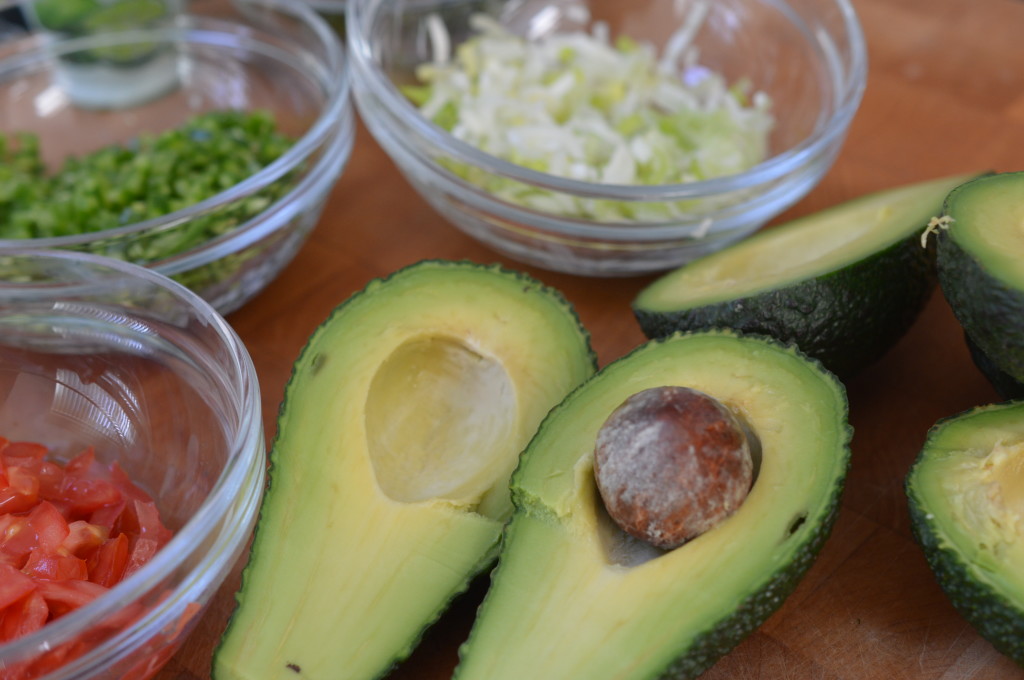 Give the avocados a rinse under cold running water. Then slice in half and scoop. Or quarters and peel. I tend to start at the narrow end and slide the knife around the stone. I don’t understand the ‘knife’ trick to remove the stone because a ripe fruit will yield its stone easily. I just slot a spoon underneath. (The exception to that is if you’re intending to use just the one half of the fruit. In that case, leave the stone in place and wrap tightly in cling film. Air is the enemy and an empty ‘stone-hole’ won’t help.)
Give the avocados a rinse under cold running water. Then slice in half and scoop. Or quarters and peel. I tend to start at the narrow end and slide the knife around the stone. I don’t understand the ‘knife’ trick to remove the stone because a ripe fruit will yield its stone easily. I just slot a spoon underneath. (The exception to that is if you’re intending to use just the one half of the fruit. In that case, leave the stone in place and wrap tightly in cling film. Air is the enemy and an empty ‘stone-hole’ won’t help.)
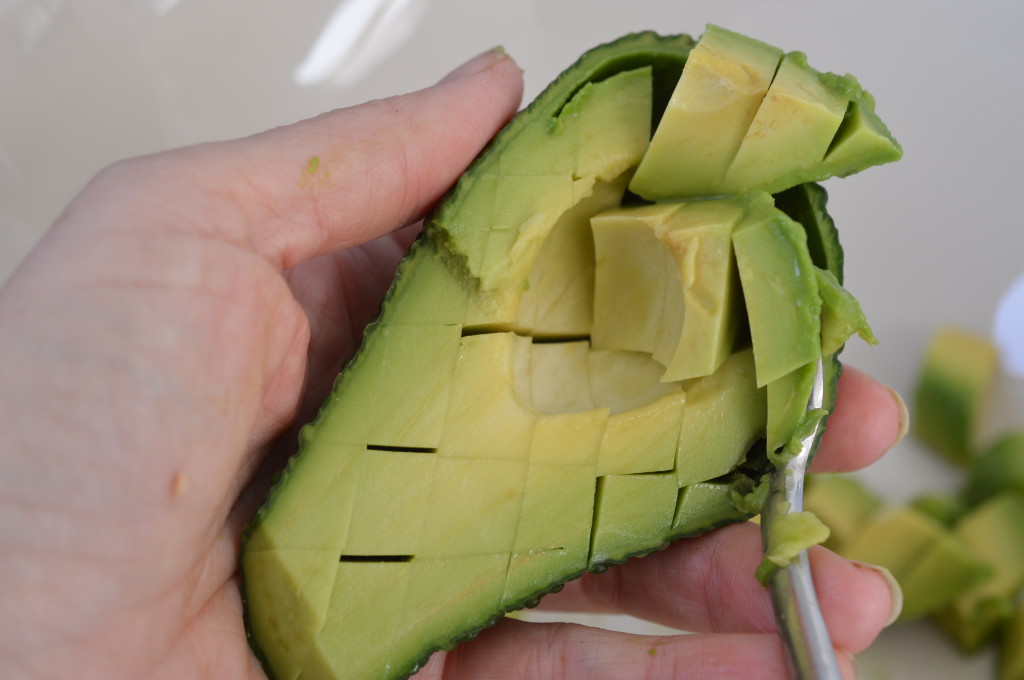 Since I’m making Guacamole and am going to squish it I use a knife to cut a hashtag formation across the flesh before scooping it all out into a bowl.
Since I’m making Guacamole and am going to squish it I use a knife to cut a hashtag formation across the flesh before scooping it all out into a bowl.
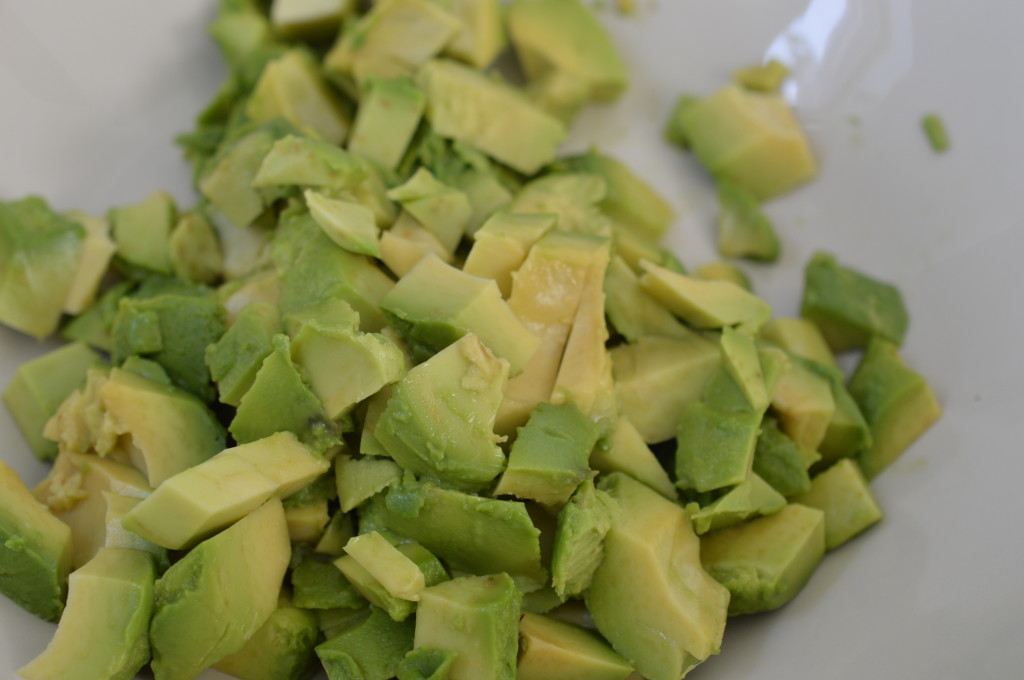 The traditional method of making guacamole, I gather, is to use a molcajete. I don’t have one. For the curious, a molcajete is a three-legged round bowl carved out of basalt. The pestle is made of the same lava rock and is called a tejolote. I have got a pestle and mortar, which might be a reasonable substitute but I tend to make Guacamole in industrial quantities so it’s not big enough. My avocado chunks go in a big bowl.
The traditional method of making guacamole, I gather, is to use a molcajete. I don’t have one. For the curious, a molcajete is a three-legged round bowl carved out of basalt. The pestle is made of the same lava rock and is called a tejolote. I have got a pestle and mortar, which might be a reasonable substitute but I tend to make Guacamole in industrial quantities so it’s not big enough. My avocado chunks go in a big bowl.
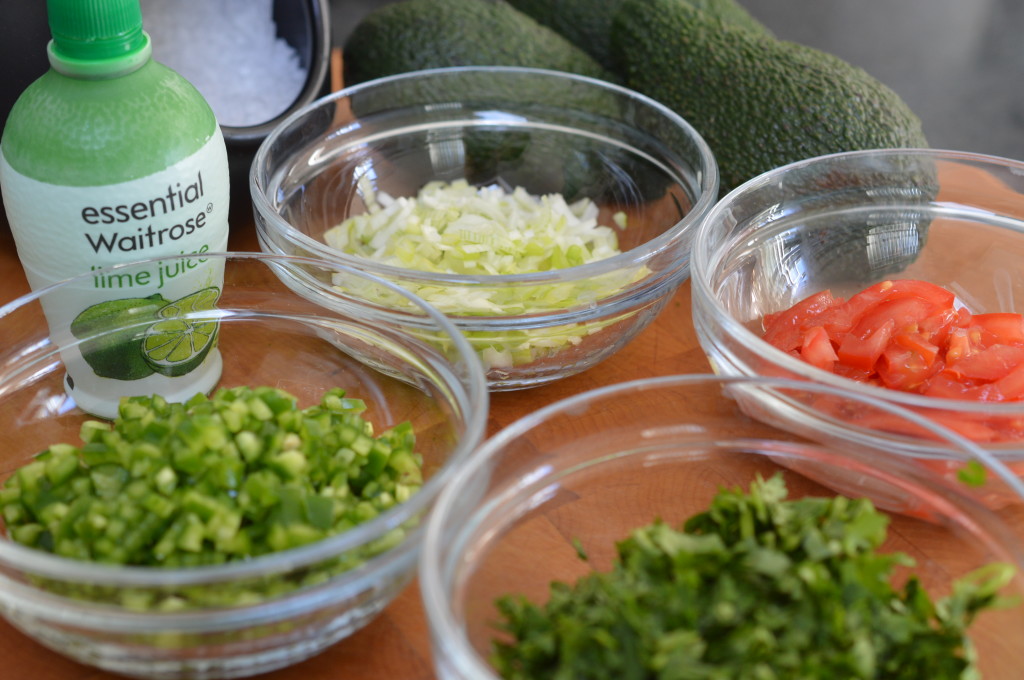 Of all the optional added extras, I like to add a little onion. I choose what’s labelled in the UK ‘Continental Salad Onions’. They look like a fat spring onion. Liddy, my daughter, really likes to add tomato and I’m neutral to negative. Out of season tomatoes taste of nothing. Chilli – yes. Lots. I tend to go for Jalapeño Chillies because they are easy to find. The only way to gauge the ‘heat’ is to cut a nibble off the end and try it. Lime juice – I use the bottled stuff because I’m not prepared to pay for fresh limes unless I’m using the zest. I also have no objection to lemon juice if I’m all out of lime. Garlic – no. Coriander (that’s cilantro in NA speak) – absolutely.
Of all the optional added extras, I like to add a little onion. I choose what’s labelled in the UK ‘Continental Salad Onions’. They look like a fat spring onion. Liddy, my daughter, really likes to add tomato and I’m neutral to negative. Out of season tomatoes taste of nothing. Chilli – yes. Lots. I tend to go for Jalapeño Chillies because they are easy to find. The only way to gauge the ‘heat’ is to cut a nibble off the end and try it. Lime juice – I use the bottled stuff because I’m not prepared to pay for fresh limes unless I’m using the zest. I also have no objection to lemon juice if I’m all out of lime. Garlic – no. Coriander (that’s cilantro in NA speak) – absolutely.
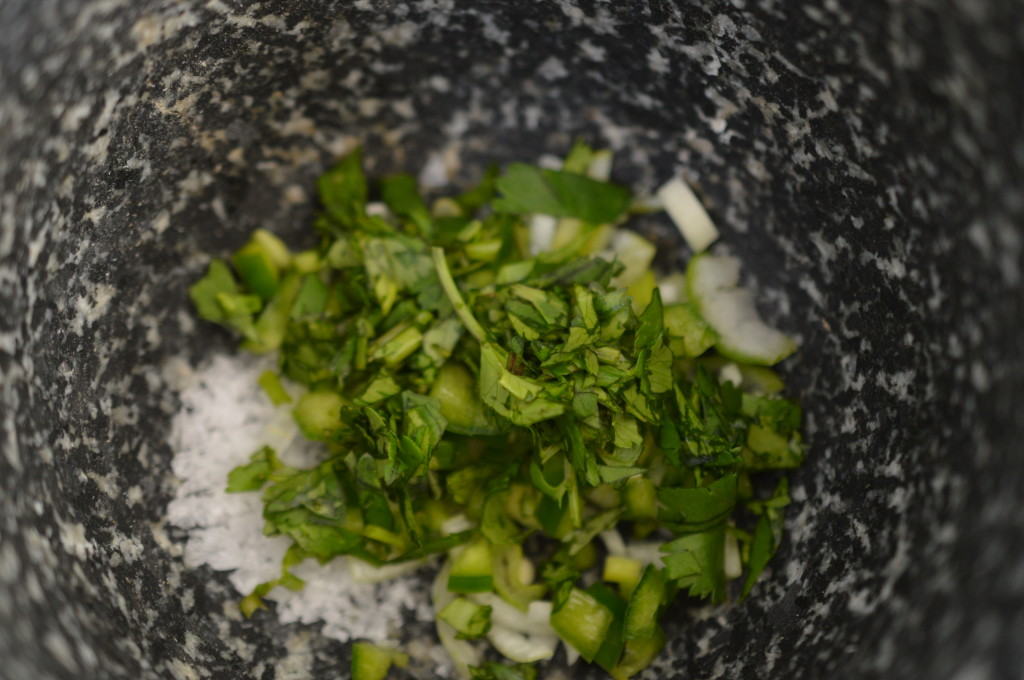 With one eye on the traditional method of pummelling everything in a molcajete I put a spoonful of salt, coriander and chilli into my pestle and mortar.
With one eye on the traditional method of pummelling everything in a molcajete I put a spoonful of salt, coriander and chilli into my pestle and mortar.
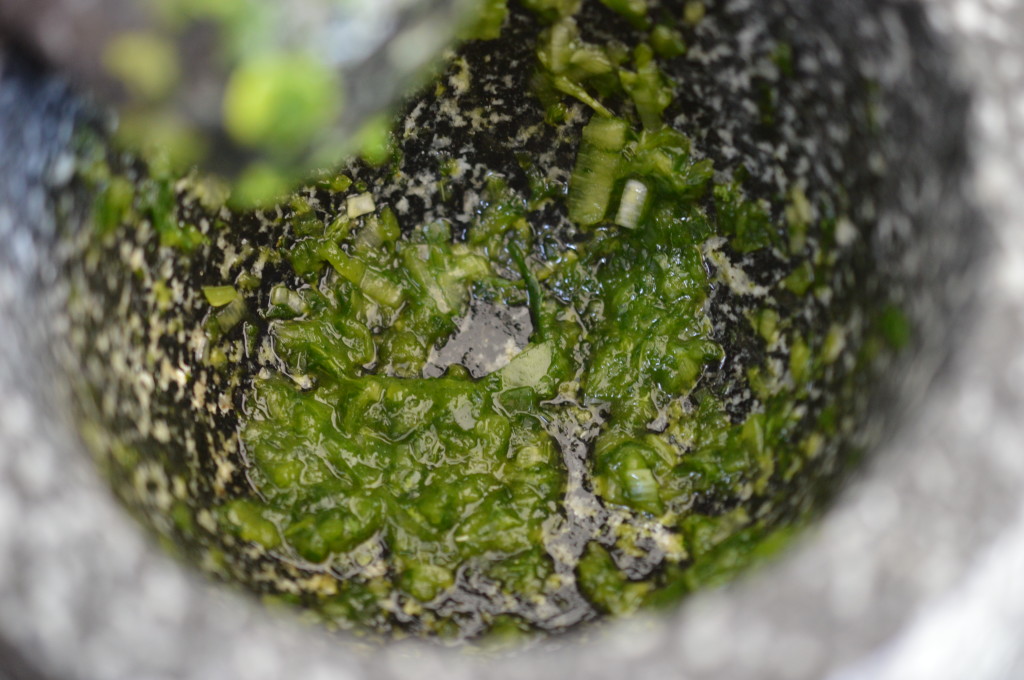 Bash to a mush. Then add a squeeze of lime juice. I now have a liquid-ish paste to coat all the avocado chunks. Add that to the avocado. Then it’s in with my fingers and I squish. I thought a fork looked more photogenic, but it isn’t what I do. Besides I had to have a clean hand to take the photo.
Bash to a mush. Then add a squeeze of lime juice. I now have a liquid-ish paste to coat all the avocado chunks. Add that to the avocado. Then it’s in with my fingers and I squish. I thought a fork looked more photogenic, but it isn’t what I do. Besides I had to have a clean hand to take the photo.
I never use a processor because it’s all too easy to end up with baby food.
Chillies, continental spring onions, coriander and seeded tomato go in next.
And mix together gently. Add a little more lime juice to taste. I think Guacamole should taste ‘zingy’.
And fresh. It really doesn’t keep well. I usually make and serve immediately. If you really do need to put it by for an hour or so, then cover it tightly in cling film. You need to exclude all air so make sure it touches the surface of your Guacamole or you’ll come back and find an unappetising brown sludge.
Eat.
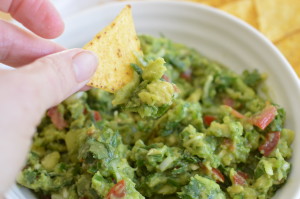 Guacamole – a bowlful, easily doubled.
Guacamole – a bowlful, easily doubled.
- 1 large ‘continental salad onion’, chopped finely
- 3 Jalapeño chillies, chopped finely (use less if yours are particularly fiery)
- Large handful of fresh coriander, chopped (about 40g)
- 3 large ripe avocados or 5 small ones (Hass is generally considered the creamiest)
- 1 tomato, finely chopped – optional
- Malden sea salt, to taste
- Lime juice, to taste
Begin by making a spicy paste. Into a pestle and mortar, put a heaped teaspoon of salt, Jalapeño chilli, coriander and Malden sea salt. Grind, then add a tablespoon of lime juice.
Place cubes of ripe avocado in a bowl and add the spicy paste. Using your fingers, mash to the consistency you want your Guacamole to finish with.
Fold in what is left of the Jalapeño chillies, the coriander and the ‘Continental spring onions’. Taste. Add more salt and lime juice, to taste. I rarely add salt and often add an additional tablespoon of lime juice.
Best served immediately. (If you must prepare ahead, it will survive for a limited amount of time if you cover the surface of the Guacamole with cling film and store in the fridge.)
Eat.
